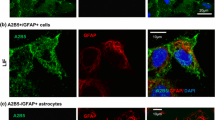Abstract
Adequate accumulation of polyunsaturated essential fatty acids, in particular docosahexaenoic acid (22∶6n−3), into membrane phospholipids is critical for optimal fetal brain development. This process is maximal during the period of rapid neurite outgrowth, neuritogenesis, which precedes the major growth phase, myelination. There is no information about differential changes during gestation to individual brain phospholipid molecular species which contain 22∶6n−3. Such details of brain development would be concealed by total fatty acid analysis of isolated phospholipid classes. We have detailed phosphatidylcholine (PC) and phosphatidylethanolamine (PE) molecular species compositions in developing fetal guinea pig brain. Total brain PC concentration increased substantially between 40 and 68 (term) d of gestation, corresponding to myelination, while PE increased in a biphasic manner between 25–35 d, which was coincident with onset of neuritogenesis, and 40–68 d. Fetal brain development was accompanied by complex changes in the concentration of individual phospholipid molecular species. During early gestation (25–40 d) 22∶6n−3 was enriched in both PC and PEsn−1 16∶0 molecular species. However, between 40 d and term there was no further increase in brain PC 22∶6n−3 content, while brain PE was significantly enriched in both PE 18∶1/22∶6 and PE18∶0/22∶6. We hypothesize that accumulation of 22∶6n−3 intosn−1 18∶1 and 18∶0 species represents establishment of a 22∶6n−3-containing membrane PE pool which may be turned over more slowly thansn−1 16∶0 species. Identification of specific changes in membrane phospholipids which are associated with defined events in brain development may provide a basis for assigning functional roles to individual molecular species.
Similar content being viewed by others
Abbreviations
- HPLC:
-
high-performance liquid chromatography
- PC:
-
phosphatidylcholine
- PE:
-
phosphatidylethanolamine
- PUFA:
-
polyunsaturated essential fatty acid(s)
References
Neuringer, M., Anderson, G.J., and Connor, W.E. (1988) The Essentiality of n−3 Fatty Acids for the Development and Function of the Retina and Brain,Ann. Rev. Nutr. 8, 517–541.
Dobbing, J., and Sands, J. (1979) Comparative Aspects of the Brain Growth Spurt,Early Human Dev. 3, 79–83.
Lin, D.S., Connor, W.E., Anderson, G.J., and Neuringer, M. (1990) Effects of Dietary n−3 Fatty Acids on the Phospholipid Molecular Species of Monkey Brain,J. Neurochem. 55, 1200–1207.
Leat, W.M.F., Curtis, R., Millichamp, N.J., and Cox, R.W. (1986) Retinal Function in Rats and Guinea Pigs Reared on Diets Low in Essential Fatty Acids and Supplemented with Linoleic or Linolenic Acids,Ann. Nutr. Metab. 30, 166–174.
Lucas, A., Morley, R., Cole, T.J., Lister, G., and Leeson-Payne, C. (1992) Breast Milk and Subsequent Intelligence Quotient in Children Born Preterm,Lancet 339, 261–264.
Lanting, C.I., Fidler, V., Huisman, M., Towen, B.C.L., and Boersma, E.R. (1994) Neurological Differences Between 9 Year Old Children Fed Breast Milk or Formula Milk as Babies,Lancet 344, 1319–1322.
Clandinin, M.T., Chappell, J.E., Leong, S., Heim, T., Swyer, P.R., and Chance, G.W. (1980) Intrauterine Fatty Acid Accretion Rates in Human Brain: Implications for Fatty Acid Requirements,Early Human Dev. 4, 121–129.
Clandinin, M.T., Chappell, J.E., Jeong, S., Heim, T., Swyer, P.R., and Chance, G.W. (1980) Extrauterine Fatty Acid Accretion in Infant Brain: Implications for Fatty Acid Requirements,Early Human Dev. 4, 131–138.
Burdge, G.C., and Postle, A.D. (1994) Hepatic Phospholipid Molecular Species in the Guinea Pig. Adaptations to Pregnancy,Lipids 29, 259–264.
Burdge, G.C., and Postle, A.D. (1993) Supply and Accumulation of Docosahexaenoic Acid into Developing Fetal Guinea Pig Brain Phosphatidylethanolamine Molecular Species,Early Human Dev. 32, 223. [Abstract]
Sinclair, A.J., and Crawford, M.A. (1972) The Accumulation of Arachidonate and Docosahexaenoate in the Developing Rat Brain,J. Neurochem. 19, 1753–1758.
Wilson, R., and Bell, M.V. (1993) Molecular Species Composition of Glycerophospholipids from White Matter of Human Brain,Lipids 28, 13–17.
Hullin, F., Kim, H.-Y., and Salem, N. (1989) Analysis of Aminophospholipid Molecular Species by High-Performance Liquid Chromatography,J. Lipid Res. 30, 1963–1975.
Burdge, G.C., Kelly, F.J., and Postle, A.D. (1993) Mechanisms of Hepatic Phosphatidylcholine Synthesis in the Developing Guinea Pig: Contributions of Acyl Remodelling and ofN-Methylation of Phosphatidylethanolamine,Biochem. J. 290, 67–73.
Bligh, E.G., and Dyer, W.J. (1959) A Rapid Method of Total Lipid Extraction and Purification,Can. J. Biochem. 37, 911–923.
Caesar, P.A., Wilson, S.J., Normand, I.C.S., and Postle, A.D. (1988) A Comparison of the Specificity of Phosphatidylcholine Synthesis by Human Fetal Lung Maintained in Either Organ or Organotypic Culture,Biochem. J. 253, 451–457.
Postle, A.D. (1987) Method for the Sensitive Analysis of Individual Molecular Species of Phosphatidylcholine by High-Performance Liquid Chromatography Using Post-Column Fluorescence Detection,J. Chromatogr. 415, 41–51.
Pugh, E.L., Kates, M., and Hanahan, D.J. (1977) Characterization of the Alkyl Ether Species of Phosphatidylcholine in Bovine Heart,J. Lipid Res. 18, 710–716.
Tyagi, S.R., Burnham, D.N., and Lambeth, J.D. (1989) On the Biological Occurrence and Regulation of 1-Acyl and 1-O-Alkyl-Diradylglycerols in Human Neutrophils. Selective Destruction of Diacyl Species UsingRhizopus Lipase,J. Biol. Chem. 264, 12977–12982.
Leray, C., Sarlieve, L.L., Drefus, H., Massarelli, R., Binaglia, L., and Freysz, L. (1994) Molecular Species of Choline and Ethanolamine Glycerophospholipids in Rat Brain Myelin During Development,Lipids, 29, 77–81.
Burdge, G.C., Hunt, A.N., and Postle, A.D. (1994) Mechanisms of Hepatic Phosphatidylcholine Synthesis in Adult Rat: Effects of Pregnancy,Biochem. J. 303, 941–947.
Samborski, R.W., Ridgway, N.S., and Vance, D.E. (1990) Evidence that only Newly-Made Phosphatidylethanolamine is Methylated to Phosphatidylcholine and that Phosphatidylethanolamine is not Significantly Deacylated-Reacylated in Rat Hepatocytes,J. Biol. Chem. 265, 18322–18329.
Author information
Authors and Affiliations
About this article
Cite this article
Burdge, G.C., Postle, A.D. Phospholipid molecular species composition of developing fetal guinea pig brain. Lipids 30, 719–724 (1995). https://doi.org/10.1007/BF02537798
Received:
Revised:
Accepted:
Issue Date:
DOI: https://doi.org/10.1007/BF02537798




